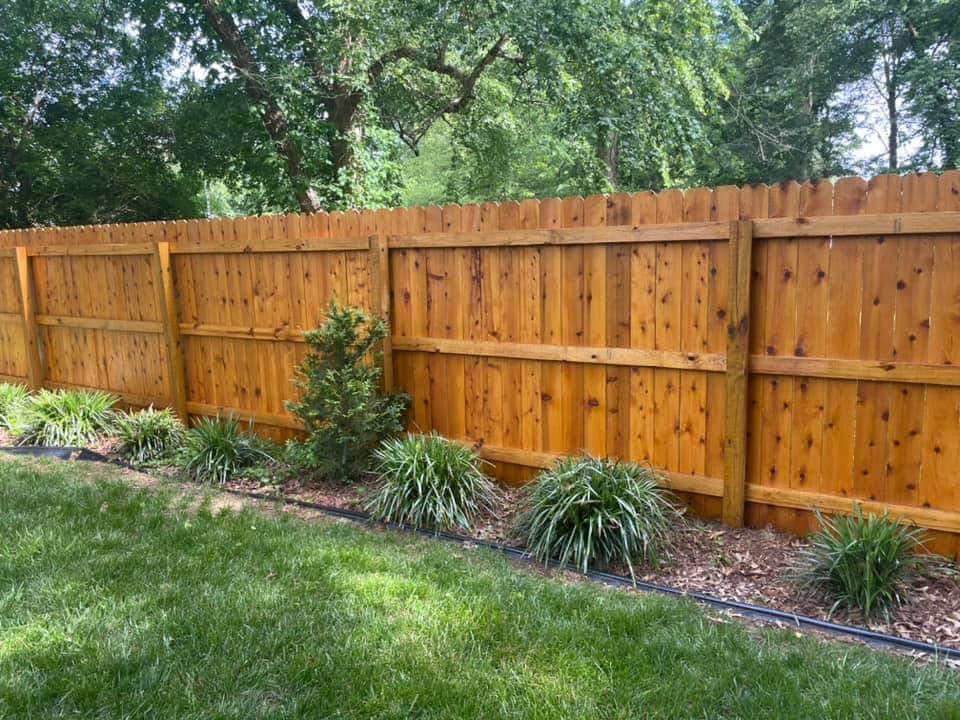Just How to Choose the Right Fence Discoloration for Your Residential Property
When it involves enhancing the appearance and durability of your residential or commercial property's fence, selecting the best stain is an essential choice that requires cautious factor to consider. With a myriad of choices readily available in the marketplace, each satisfying various wood kinds, colors, and openness degrees, the process can promptly become overwhelming. However, making an informed choice can substantially impact the total aesthetic appeals and longevity of your fencing. So, how can you ensure that you choose the ideal fencing discolor that straightens with your home's design and upkeep requirements? Allow's explore some key aspects to assist you in this decision-making process.
Understanding Timber Types
To choose the suitable fence discolor, it is vital to have a thorough understanding of the various types of wood typically utilized for secure fencing. When choosing a fence discolor, it is essential to take into consideration the type of timber being made use of to make certain compatibility and optimal security. Comprehending the features of various wood kinds will certainly assist you make a notified decision when it comes to selecting the ideal fencing discolor for your property.
Selecting the Right Shade
Picking a proper shade for your fencing stain is an important decision that significantly influences the total aesthetic charm of your residential property. Lighter colors such as whites or light grays can make a fencing appear larger and include a touch of style to your building. Ultimately, the ideal shade selection will boost the beauty of your fence and elevate the total curb charm of your home.

Thinking About Transparency Levels
When choosing the appropriate color for your fencing tarnish, one more crucial element to think about is the level of openness that will certainly finest suit your residential property's visual and upkeep requirements. Transparency levels in fencing discolorations usually come under three groups: clear, semi-transparent, and strong. Transparent discolorations permit the natural elegance of the wood to reveal through while supplying minimal protection versus the elements. They are ideal for new or well-kept fences where showcasing the timber grain is a priority. Semi-transparent discolorations use a balance in between shade enhancement and security, permitting some wood grain to be noticeable while giving moderate securing from UV rays and wetness. Strong discolorations, on the other hand, give the most defense as they totally cover the wood with an opaque coating. These are appropriate for older fencings or those looking for significant security or shade change. Think about the level of exposure your fence faces, the wanted upkeep frequency, and the aesthetic you desire to attain when choosing the appropriate transparency degree for your fencing discolor.
Reviewing Upkeep Needs
Thinking about the durability and upkeep of your fence, examining the upkeep needs is important in establishing one of the most ideal fencing stain for your building. The degree of upkeep required for your fence can differ depending upon aspects such as the kind of wood, weather in your location, and your individual preferences.
When reviewing upkeep demands, it is important to take into consideration the toughness of the fencing discolor. Some spots require more regular reapplication than others, so choosing a tarnish with a much longer life expectancy can aid reduce the total upkeep requirements of your fence (Fence Staining). Additionally, factors such as resistance to UV rays, water, and mold can affect exactly how typically you require to re-stain your fencing

Checking Samples Before Application
Before using any kind of fencing stain, it is suggested to conduct example tests to guarantee compatibility with the timber and wanted visual result (Fence Staining Nashville TN). Checking examples permits you to assess just how the tarnish will certainly interact with the specific kind of timber made use of in your fencing, as various timbers can soak up stains in different ways. To start, choose a small inconspicuous location of the fence to apply the stain examples. It is recommended to examine multiple tarnish choices on this section to compare colors and coatings. Consider how the stain looks when completely dry, as it may show up various from its wet application. Furthermore, observe exactly how the stain matches the existing aspects in your outdoor space, such as landscape design or the color of your home. Take note of just how the stain stands up to weather conditions like sunlight and moisture. By testing examples prior to complete application, you can make an informed choice that improves the overall appearance of your property while protecting the timber successfully.
Conclusion
To conclude, choosing the appropriate fencing discolor for your residential property involves comprehending the timber type, picking the best shade, considering transparency levels, reviewing maintenance demands, and screening examples prior to application (Fence Staining). By taking these aspects right into factor to consider, you can make sure that your fencing stain matches your property while supplying the required security and durability. Make a notified choice to boost the appearance and long life of your fencing